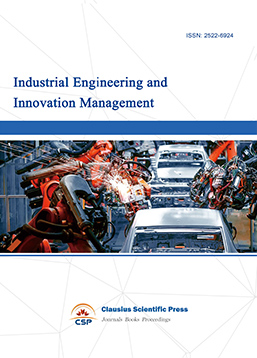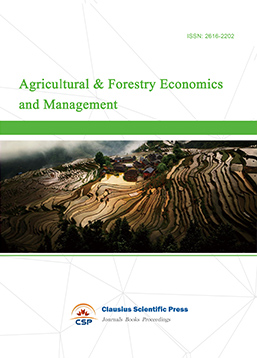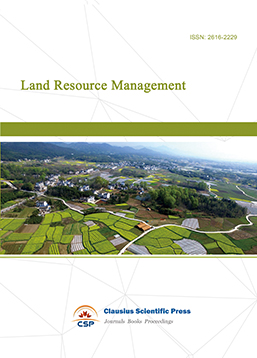Integration of Sports and Medicine in Higher Medical Education: Challenges, Significance, and Strategies
DOI: 10.23977/socmhm.2024.050106 | Downloads: 25 | Views: 1746
Author(s)
Cui Zaichi 1,2, Lee Phaik Gaik 2, Hu Jingbo 2,3
Affiliation(s)
1 Hainan Medical University, Haikou, Hainan, 571199, China
2 SEGi University, Petaling Jaya, Selangor, 47810, Malaysia
3 Chengde Medical University, Chengde, Hebei, 067000, China
Corresponding Author
Hu JingboABSTRACT
This paper explores the importance of integrating sports and medicine in the comprehensive education of medical students, along with addressing the current challenges and solutions in teaching practices. It initially introduces the integrated medical-sports education model, emphasizing its significance and discusses the existing problems in teaching practices, including teacher competency, lack of teaching materials, low student participation, and inadequate integration of sports and medical resources. Solutions proposed include enhancing coordination, standardizing materials, improving teaching methods, and optimizing resource integration. The paper further underscores the significance of integrated sports and medical education in achieving teaching goals, reforming physical education, and enhancing professional readiness in medicine. In its conclusion, it highlights the need for comprehensive development amid societal competition, advocating for the integrated medical-sports education model as an effective approach to cultivate highly qualified composite talents in medical universities.
KEYWORDS
Integration of medicine and physical education; challenges; significance; strategiesCITE THIS PAPER
Cui Zaichi, Lee Phaik Gaik, Hu Jingbo, Integration of Sports and Medicine in Higher Medical Education: Challenges, Significance, and Strategies. Social Medicine and Health Management (2024) Vol. 5: 36-40. DOI: http://dx.doi.org/10.23977/socmhm.2024.050106.
REFERENCES
[1] Niu Y. Integrated physical education and medicine in general physical education at universities in the age of educational technologies. BMC Med Educ. 2023 Jun 22; 23(1):466. doi: 10.1186/s12909-023-04440-9.
[2] Calderón, Antonio, et al. "An Integrated Blended Learning Approach for Physical Education Teacher Education Programmes: Teacher Educators' and Pre-Service Teachers' Experiences." Physical Education and Sport Pedagogy, 21 Sept. 2020, pp. 1–16, https://doi.org/10.1080/17408989.2020.1823961.
[3] Bliekendaal, S., Barendrecht, M., Stubbe, J., & Bolling, C. (2022). Preventing Sports Injuries during the Physical Education Teacher curriculum, students’ Perspectives and Recommendations on Prevention. Journal of Physical Education and Sport, 22(9). https://doi.org/10.7752/jpes.2022.09276
[4] Neil-Sztramko, S. E., Caldwell, H., & Dobbins, M. (2021). School-based physical activity programs for promoting physical activity and fitness in children and adolescents aged 6 to 18. The Cochrane database of systematic reviews, 9(9), CD007651. https://doi.org/10.1002/14651858.CD007651.pub3
[5] Griban, G. P., Tymoshenko, O. V., Arefiev, V. G., Sushchenko, L. P., Domina, Z. G., Malechko, T. A., Zhuravlov, I. G., Tkachenko, P. P., Baldetskiy, A. A., & Prontenko, K. V. (2020). The role of physical education in improving the health status of students of special medical groups. Wiadomości Lekarskie, 73(3), 534–540. https://doi.org/ 10.36740/ wlek202003125
[6] Muñoz-Bullón, F., Sanchez-Bueno, M. J., & Vos-Saz, A. (2017). The influence of sports participation on academic performance among students in higher education. Sport Management Review, 20(4), 365–378. https://doi.org/10. 1016/j. smr. 2016.10.006
[7] Till, K., & Baker, J. (2020). Challenges and possible solutions to optimizing talent identification and development in sport. Frontiers in Psychology, 11. https://doi.org/10.3389/fpsyg.2020.00664
[8] Bailey, R., Vašíčková, J., Vlček, P., Raya Demidoff, Andreu, Pühse, U., Heck, S., & Scheuer, C. (2022). An international review of the contributions of school-based physical activity, physical education, and school sport to the promotion of health-enhancing physical activity. Zenodo (CERN European Organization for Nuclear Research). https://doi.org/10.5281/zenodo.5899571
[9] Vishnubala, D., Iqbal, A., Marino, K., Pandya, T., Salman, D., Pringle, A., Nykjaer, C., Bazira, P., Eastwood, D., & Finn, G. (2023). Creating a sport and exercise medicine undergraduate syllabus: a delphi study. BMC Medical Education, 23(1). https://doi.org/10.1186/s12909-023-04139-x
[10] Yadav M. (2022). Diet, Sleep and Exercise: The Keystones of Healthy Lifestyle for Medical Students. JNMA; journal of the Nepal Medical Association, 60(253), 841–843. https://doi.org/10.31729/jnma.7355
[11] Trilk, J., Nelson, L., Briggs, A., & Muscato, D. (2019). Including lifestyle medicine in medical education: Rationale for american college of preventive medicine/american medical association resolution 959. American Journal of Preventive Medicine, 56(5), e169–e175. https://doi.org/10.1016/j.amepre.2018.10.034
[12] Malm, C., Jakobsson, J., & Isaksson, A. (2019). Physical Activity and Sports-Real Health Benefits: A Review with Insight into the Public Health of Sweden. Sports (Basel, Switzerland), 7(5), 127. https://doi.org/10.3390/sports7050127
| Downloads: | 3111 |
|---|---|
| Visits: | 189378 |
Sponsors, Associates, and Links
-
Information Systems and Economics

-
Accounting, Auditing and Finance

-
Industrial Engineering and Innovation Management

-
Tourism Management and Technology Economy

-
Journal of Computational and Financial Econometrics

-
Financial Engineering and Risk Management

-
Accounting and Corporate Management

-
Social Security and Administration Management

-
Population, Resources & Environmental Economics

-
Statistics & Quantitative Economics

-
Agricultural & Forestry Economics and Management

-
Land Resource Management

-
Information, Library and Archival Science

-
Journal of Human Resource Development

-
Manufacturing and Service Operations Management

-
Operational Research and Cybernetics


 Download as PDF
Download as PDF